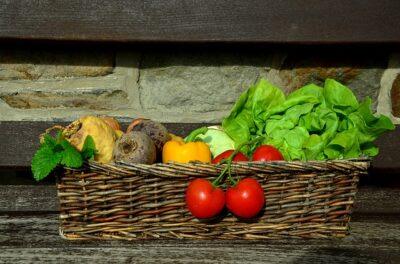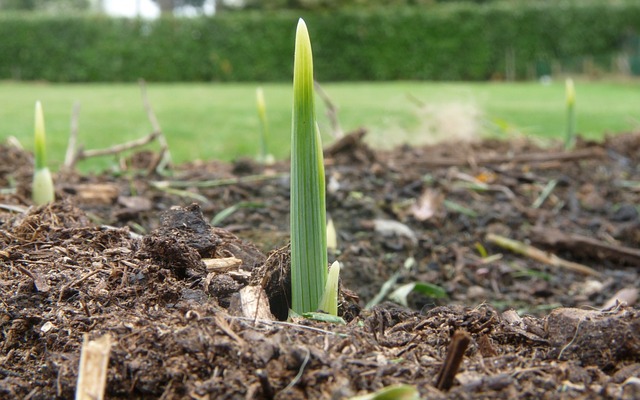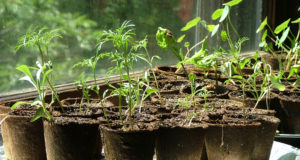If you live south of a certain latitude, your garden is already in the ground and your growing season is underway. Many of us up north, however, are still digging out from a winter’s worth of snow and ice. Planting even cold-hardy crops such as peas and spinach might require a drill or chisel to loosen the topsoil if we could get to it at all.
Even if you can’t get your hands in the dirt quite yet, there are plenty of things you can – and should – be doing right now.
In order to hit the ground running when spring does arrive in your region, it is a great idea to have all your planning, decision-making, inventorying, purchasing, preparing, repair and maintenance jobs done. Here are a few details to help you set up your own to-do list to maximize your pre-season readiness.
Spring Gardening Preps: Organize Your Area Before Planting
Envision this year’s garden. Many gardeners add on, rearrange and tweak the layout every year. I usually draw it out on paper. Some of the things I try to keep in mind in this endeavor include:
- Can you easily access it when you need to? Some people keep a “kitchen garden” near the house which contains often-used plants such as herbs, lettuces, and cherry tomatoes, so they can run out and grab what they need for meal preparation.
- Try to keep the plants most appealing to hungry wildlife in spots least accessible to them, or in areas you are most able to protect. When planning the vegetables for my plots furthest from the house, I try to avoid deer favorites. When planting corn, I make sure it is in a location near one of my fence chargers – that way I can electrify the fence when the corn is ready for harvest and prevent raccoons from beating me to it. Make sure to place crops that attract ravenous flying pests in an area conducive to netting or row cover.
- Remember the needs of pollinators. Include plants that will draw them in without causing discomfort to you or others enjoying the garden.
- Consider companion planting. Certain plants do better in close proximity to others. For example, the combination of beans, corn, and squash is often said to be desirable.
- Think about soil depth and composition. Plants that need more acidity will not do well in the section where you have discarded wood stove ashes, and a very long root crop such as parsnip will need deep, rock-free soil for proper growth.
- Try to move things around year-to-year. Different families of vegetables use different soil nutrients and leave the rest. Placing tomatoes or rutabagas in the same spot year after year could result in diminished yield or quality.
This New All-Natural Fertilizer Doubles Garden Production!
Spring Gardening Preps: Buy The Right Seeds And Plants
Once your plan is in place, buy the seeds you need. Do not procrastinate on this point. Many seed catalogs sell out early, particularly the smaller and local ones. If you have not ordered your seed packets, do it right away. If the ones you want are already sold out, do not despair. High-quality local seed selections are often available for resale at small commercial greenhouses.
Remember that some of your vegetables should be planted from seed and other varieties need to be started ahead of time indoors or in greenhouses. Some can be done either way, depending upon your local conditions and personal preference. Know which is which and be ready for implementation. You can start your own seeds, or buy them all started from a greenhouse.

By following proper spring gardening preps, you can ensure a productive and bountiful harvest this growing season. (Image source: Pixabay.com)
If you do plan to start your own, remember that leeks and long-day-length onions should have already been started in February or March for the best possible yields. Other vegetables can be started now or later in spring.
Spring Gardening Preps: Look Everything Over
Inventory your supplies. If you are starting your own seeds, make sure you have all the plug trays and soil you need. Check out your lights, bulbs and mats, and repair or replace as needed.
If you use row cover, plastic mulch, greenhouse plastic, landscape fabric or any other materials which are reusable but do not last forever, take a look at your collection right now. In particular, if there are rips you forgot about or if you discover mice did damage to it over the winter, you will want to replenish your supply early while there is still a good selection available in stores.
If you are still waiting for the ground to thaw, now is a terrific time to get your garden tools out and look them over. Sharpen, repair and replace as necessary.
Spring Gardening Preps: Get Things Ready Outdoors
If you are able to access your gardens at this point, get busy outside.
- Clean out leaves and debris.
- Do soil testing if you did not do so last fall. Many people prefer fall testing so that any amendments can be made ahead of time, but a spring test is better than no test.
- Add compost and amendments as needed.
- Repair raised beds and garden structures as necessary.
- Get fences, posts and climbing trellises in good working order.
- Shore up greenhouse and tunnel structures. Tighten tubing, replace plastic coverings and ensure heating and cooling components are ready to go for the season.
Few undertakings are more rewarding than growing your own food, but every climate has its particular challenges and advantages. If you want to grow vegetables but live up north, do not let that slow you down. Get organized, stocked up and busy now for a wonderful harvest season down the road.
What other spring gardening preps would you add to this list? Share your ideas in the comments section below:
 Off The Grid News Better Ideas For Off The Grid Living
Off The Grid News Better Ideas For Off The Grid Living




